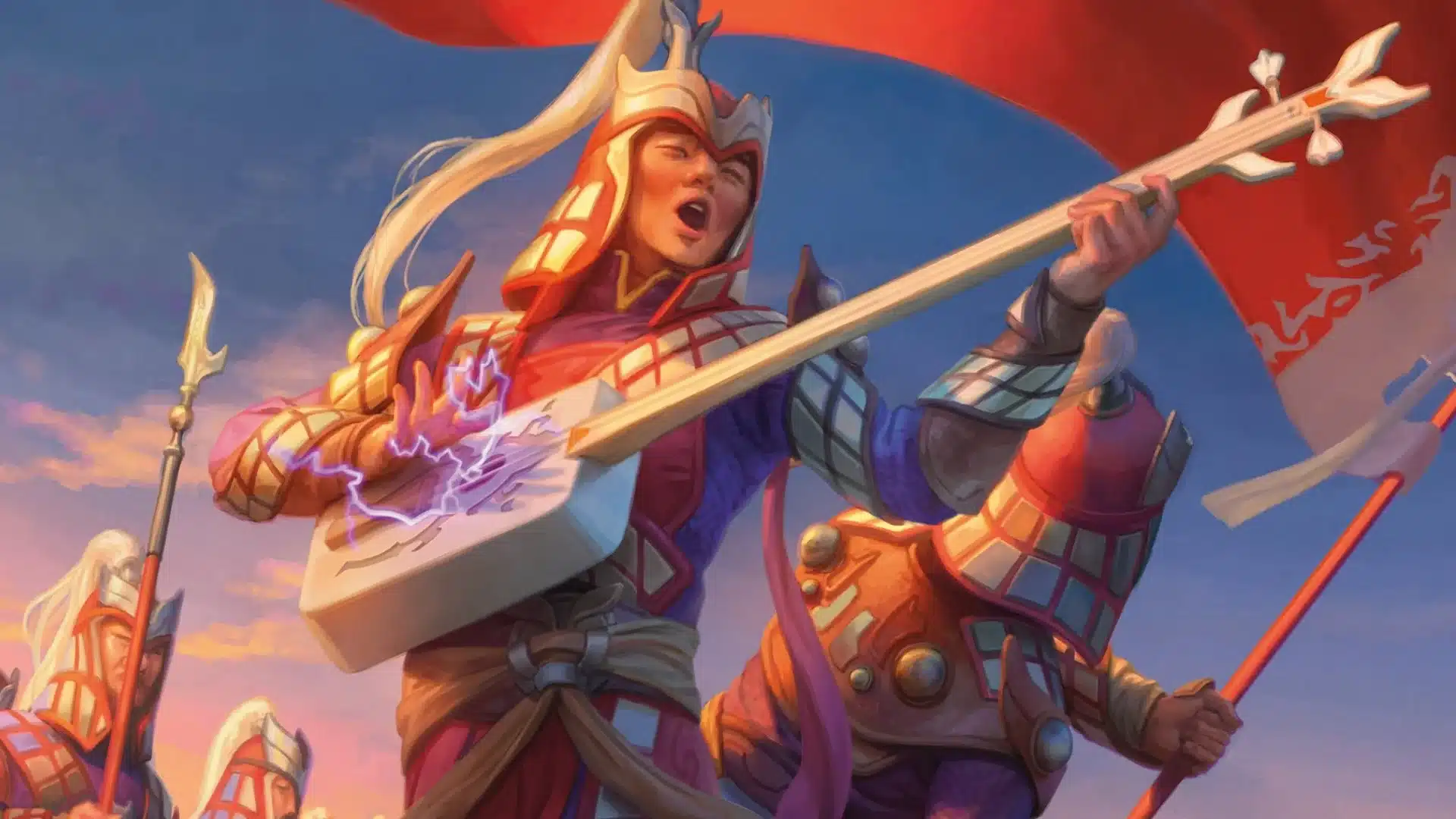Every day, it seems like Tarkir: Dragonstorm is making a bigger and bigger impact on Constructed. While many of Tarkir: Dragonstorm’s best cards are flashy designs or robust value engines like Cori-Steel Cutter, some get make an impact through their efficiency and versatility.
That’s certainly the case for Voice of Victory. Voice of Victory is a simple card with two distinct abilities. The combination of these abilities and the well-statted, cheap body Voice of Victory provides has helped the card make a splash in a variety of different formats. You get a lot of bang for your buck here, so let’s take a closer look at some of the strongest shells for the card.
Voice of Victory in Standard

Early on in Tarkir: Dragonstorm Standard, players quickly built around Mobilize synergies. Powerful rares like Mardu Siegebreaker and Zurgo, Thunder’s Decree encouraged players to utilize cheap creatures with Mobilize. Voice of Victory certainly fit the bill, and curving Voice of Victory into Zurgo felt like a good way to pull ahead.
Over time, though Mardu Mobilize faded a bit in the competitive scene. Luckily, though, Voice of Victory found a new home in Azorius Omniscience combo.
At first glance, this may seem like a weird archetype for Voice of Victory. After all, this deck isn’t really looking to win via combat damage. Yet, the value Voice of Victory provides by simply preventing your opponent from messing with your combo makes it a great sideboard card.
The main goal for Azorius Omniscience combo is to discard Omniscience, then use Abuelo’s Awakening to resurrect it. From there, you can cast Invasion of Arcavios, tutor up Jeskai Revelation from your sideboard, and win the game by repeatedly bouncing Invasion and replaying Jeskai Revelation, burning your opponent out in the process.
As strong as this gameplan is, it can be a bit tough to resolve Abuelo’s Awakening in the face of Counterspells. That’s why in sideboard games, you can bring in Voice of Victory versus control. With enough mana, Voice of Victory does a solid Silence impression. The opponent is forced to counter Voice of Victory as well as your follow-up combo piece, which isn’t always easy.
If you stick Voice, removal-based interaction for Omniscience such as Get Lost is no longer effective, either. This only makes your combo more reliable.
Voice of Victory in Modern

As good as Voice of Victory is in Standard, perhaps its true Constructed calling is in older formats. In Modern, Legacy, and even Vintage, Voice of Victory has a lot of appeal. In Modern, the most common shell by far that Voice of Victory is seeing play in is Boros Energy.
Boros Energy is an incredibly popular archetype with a ton of options in the two-mana creature slot. Beating out cards like Phelia, Exuberant Shepherd isn’t easy, but Voice of Victory does have a lot of appeal in the deck.
First and foremost, there are plenty of ways to abuse the token production. Attacking and then sacrificing your tokens to Goblin Bombardment to ping multiple creatures can be very effective versus other Ocelot Pride decks.
Each token that enters immediately builds up your Energy count if you have Guide of Souls in play, too. When you attack with Voice of Victory, you can stack the Guide of Souls and Voice of Victory abilities so that your attacking tokens enter first, giving you extra Energy. Then, you can use these Energy counters to buff one of your attackers and give it Flying when the Guide of Souls ability resolves.
Playing a two-drop without an enters-the-battlefield ability or built-in protection from removal isn’t perfect. Still, Voice pulls its weight in a lot of spots. Sometimes, you can even give it Haste with Arena of Glory, enabling at least one attack that your opponent can’t mess with at all. Having all this upside on a two-drop is really nice.
Voice of Victory in Legacy and Vintage

Moving on to Legacy and Vintage, there are a handful of different decks that are beginning to incorporate Voice of Victory. The most prominent shell in Legacy is definitely Cephalid Breakfast. Both of Voice of Victory’s abilities come into play here.
As a spell-stopper during your turn, Voice makes your Cephalid Illusionist combo more resilient. For those unfamiliar, this deck abuses the combo between Cephalid Illusionist and Nomads en-Kor. You just target Cephalid Illusionist with Nomads en-Kor infinite times, mill your whole deck, and win by resurrecting Thassa’s Oracle with Dread Return.
In addition to being an added layer of protection, though, Voice of Victory is also an excellent card to pair with Nadu, Winged Wisdom. Nomads en-Kor and Nadu is a great combo itself. Voice both protects Nadu and gives you an additional creature to target for extra Nadu triggers. Oh, and the tokens Voice generates can then be targeted by Nomads en-Kor during your second main phase, letting you really pop off.
Voice of Victory is also making its mark in token and Energy shells in Legacy. These decks aren’t super widespread, but they do serve as natural homes for Voice. You get a lot of the same synergies as in Modern, but your tokens also serve as sacrifice fodder for Broadside Bombardiers and ensure Staff of the Storyteller continuously has enough story counters to keep drawing you cards.
Voice is even making some noise in Vintage Lurrus of the Dream Den decks. If you ever get to Equip your tokens with Skullclamp, you’ll feel like you’re living the dream! Despite not being a big bomb, Voice of Victory sure is an elite inclusion for a lot of different archetypes.
